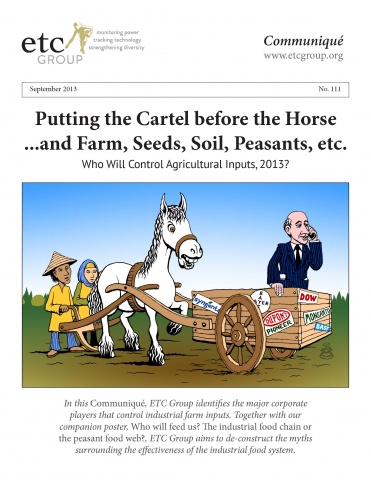Worldwide, an estimated 2 billion people live primarily on a meat-based diet, while an estimated 4 billion live
primarily on a plant-based diet. The US food production system uses about 50% of the total US land area, 80% of the fresh water, and 17% of the fossil energy used in the country. The heavy dependence on fossil energy suggests that the US food system, whether meat-based or plant-based, is not sustainable. The use of land and energy resources devoted to an average meat-based diet compared with a lactoovovegetarian (plant-based) diet is analyzed
in this report. In both diets, the daily quantity of calories consumed are kept constant at about 3533 kcal per person. The meat-based food system requires more energy, land, and water resources than the lactoovovegetarian diet. In this limited sense, the lactoovovegetarian diet is more sustainable than the average American meatbased
diet. Am J Clin Nutr 2003;78(suppl):660S–3S.
KEY WORDS Meat-based diet, plant-based diet, environment, natural resources, fossil, energy, fuel
Since humans worldwide obtain more than 99.7% of their food (calories) from the land and less than 0.3% from the oceans and aquatic ecosystems, preserving cropland and maintaining soil fertility should be of the highest importance to human welfare. Soil erosion is one of the most serious threats facing world food production. Each year about 10 million ha of cropland are lost due to soil erosion, thus reducing the cropland available for world food production. The loss of cropland is a serious problem because the World Health Organization and the Food and Agricultural Organization report that two-thirds of the world
population is malnourished. Overall, soil is being lost from agricultural areas 10 to 40 times faster than the rate of soil formation imperiling humanity’s food security.
Keywords: soil erosion; malnutrition; cropland; rangeland; pasture; soil organic
matter; assessment
Industrial Livestock Companies’
Gains from Low Feed Prices, 1997-2005
By Timothy A. Wise and Elanor Starmer
With rising demand for corn-based ethanol, representatives of many of the
nation’s leading meat companies have expressed concern over the rising price
of animal feed, which has increased significantly with the price increases for
its two principal components, corn and soybeans. Feed prices have indeed increased
significantly. As feed costs generally account for more than half of
operating costs for industrial operations, higher prices can have an important
impact on the botom line for these companies. So too can low prices. Any
discussion of today’s high prices should take into account the extent to which
these same firms have benefited from many years of feed that was priced well
below what it cost to produce. In the nine years that followed the passage of
the 1996 Farm Bill, 1997-2005, corn was priced 23% below average production
costs, while soybean prices were 15% below farmers’ costs. As a result, feed
prices were an estimated 21% below production costs for poultry and 26% below
costs for the hog industry. We estimate cumulative savings to the broiler
chicken industry from below-cost feed in those years to be $11.25 billion, while
industrial hog operations saved an estimated $8.5 billion. As we show below,
the leading firms gained a great deal during those years from U.S. agricultural
policies that helped lower the prices for many agricultural commodities.
